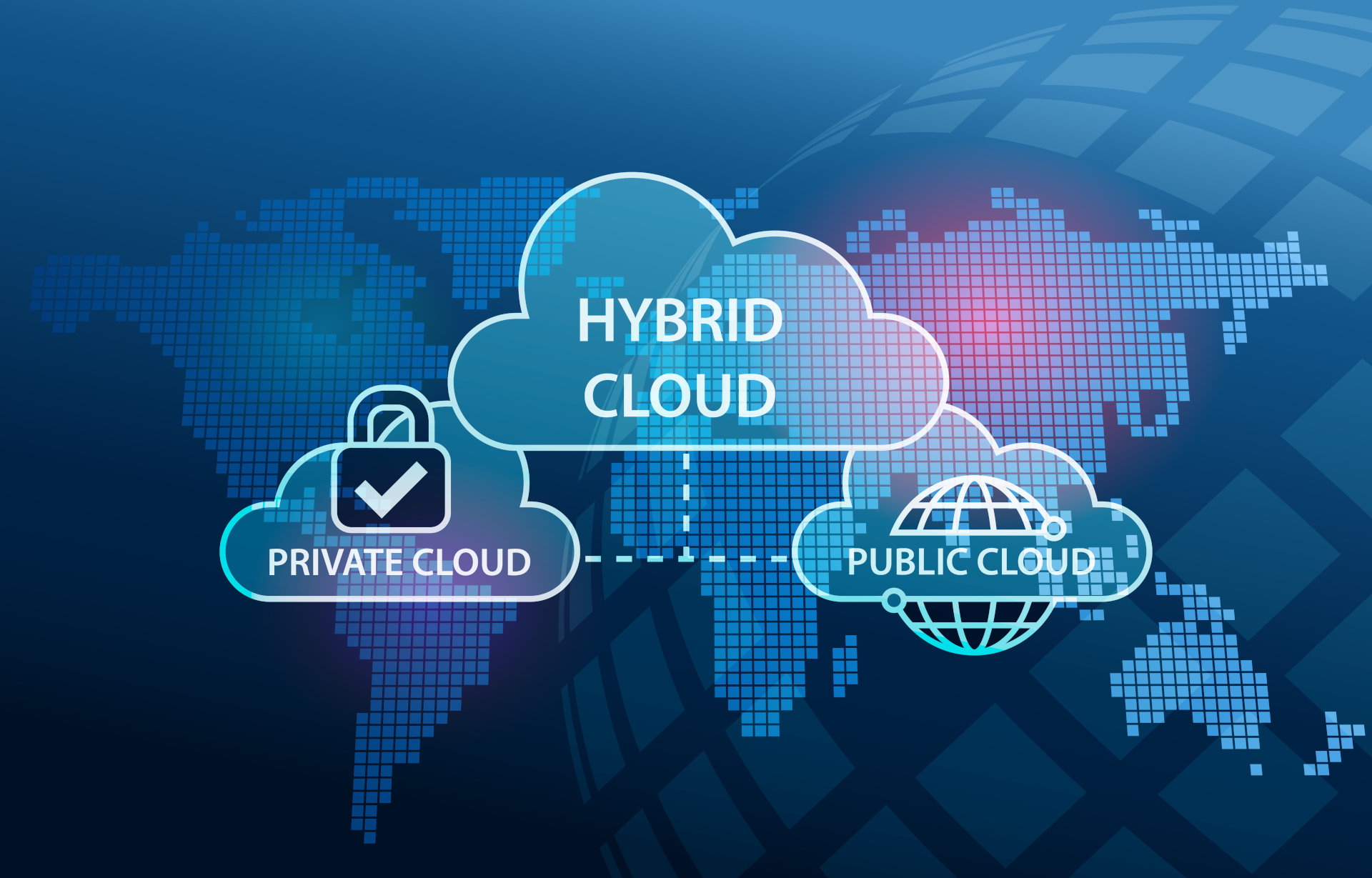Hybrid cloud computing is an IT architecture that combines two or more types of cloud environments, such as public clouds, private clouds, and on-premises infrastructure.
In addition, hybrid cloud computing allows organizations to leverage the benefits of multiple cloud models, such as scalability, cost-efficiency, control, and security.
1. Breaking Down Silos:
Traditional IT structures often have isolated development and operations teams, leading to communication gaps and inefficiencies. DevOps fosters collaboration by breaking down these silos. Developers and operations personnel work together throughout the software development lifecycle, ensuring a smooth transition from development to deployment in the cloud.
2. Automation is Key:
DevOps emphasizes automation of repetitive tasks, such as provisioning infrastructure, deploying applications, and running tests. This frees up IT teams to focus on higher-value activities like innovation and problem-solving. Automated processes in the cloud ensure consistency, reduce human error, and enable faster deployments.
3. Continuous Integration and Delivery (CI/CD):
DevOps promotes CI/CD practices. Developers integrate code changes frequently, and automated tests continuously validate functionality. This allows for faster feedback loops and quicker identification of bugs. With CI/CD in the cloud, deployments become more frequent and less risky, allowing you to deliver new features and updates to your customers rapidly.
4. Infrastructure as Code (IaC):
DevOps encourages defining infrastructure as code. This means infrastructure configurations—servers, networks, storage—are written in human-readable code like Python or YAML. This code can be version-controlled and easily deployed in the cloud, ensuring consistency and repeatability across different environments. IaC allows for faster provisioning of infrastructure in the cloud and simplifies infrastructure management.
5. Embracing a Culture of Experimentation:
DevOps fosters a culture of experimentation and rapid iteration. This translates well to the cloud environment, where you can easily spin up new resources, test new features, and scale back if needed. The cloud’s flexibility allows for rapid experimentation and innovation without significant upfront investment.
6. Monitoring and Feedback Loops:
DevOps emphasizes continuous monitoring of applications and infrastructure performance. In the cloud, you have access to comprehensive monitoring tools that provide real-time insights into your applications and resources. This allows for proactive problem identification and faster resolution of issues, ensuring optimal performance of your cloud-based applications.
7. Security Throughout the Lifecycle:
Security is a top priority in the cloud. DevOps principles encourage integrating security checks throughout the software development lifecycle. This includes automated security testing in the CI/CD pipeline. By proactively addressing security vulnerabilities early on, you can minimize risks and ensure a secure cloud environment.
Shift Left Security: Security checks are integrated early and often. This means automated security testing becomes a regular part of the CI/CD pipeline. Security vulnerabilities are identified and addressed as early as possible in the development process, before they become bigger problems later.
Shared Responsibility: Both development and operations teams share responsibility for security in the cloud. Developers write secure code, and operations teams configure secure cloud environments. This collaborative approach ensures a holistic defense against security threats.
Continuous Monitoring: Security isn’t a one-time fix. DevOps practices emphasize continuous monitoring of cloud environments for suspicious activity. Security tools and threat detection mechanisms become an integral part of the cloud infrastructure, allowing for proactive identification and mitigation of security risks.
8. Scalability on Demand:
Cloud environments offer unmatched scalability. With DevOps practices in place, you can easily scale your cloud resources up or down to meet fluctuating demands. Automated provisioning and deployment allow you to quickly adjust resources based on real-time needs, optimizing costs and ensuring optimal performance.
Automated Provisioning: DevOps practices like Infrastructure as Code (IaC) enable automated provisioning of cloud resources. When needed, additional servers, storage, or network resources can be spun up quickly in the cloud, eliminating the need for manual configuration and delays.
Rightsizing for Needs: DevOps allows you to monitor resource utilization and scale your cloud infrastructure based on real-time needs. During peak usage periods, you can easily scale up resources to handle the increased demand. When traffic subsides, you can scale back resources to optimize costs. This ensures you only pay for what you use.
9. Improved Collaboration and Communication:
DevOps promotes better collaboration and communication between development, operations, and other teams involved in the software development process. Cloud-based collaboration tools further enhance communication and knowledge sharing, leading to faster problem-solving and improved efficiency across teams.
10. Faster Time to Market:
By automating processes and integrating development and operations, DevOps significantly reduces the time it takes to deliver new features and applications. This translates to faster time to market in the cloud environment, allowing you to stay ahead of the competition and capitalize on new opportunities.
11. Cost Optimization:
DevOps practices like automation and infrastructure as code help optimize costs in the cloud. By eliminating manual configurations and automating deployments, you reduce inefficiencies and waste. Additionally, the cloud’s pay-as-you-go model allows you to only pay for the resources you use, further reducing operational costs.
12. Disaster Recovery and Business Continuity:
The cloud offers robust disaster recovery capabilities. DevOps principles like infrastructure as code and automated deployments facilitate disaster recovery processes. By replicating your infrastructure and applications in the cloud, you can ensure business continuity and minimize downtime in case of unforeseen events.
13. Access to Cutting-Edge Technologies:
Public cloud providers constantly innovate and offer access to cutting-edge technologies like artificial intelligence, machine learning, and serverless computing. DevOps practices allow you to leverage these technologies more effectively by enabling rapid integration and experimentation within your cloud environment.
14. Improved Developer Experience:
DevOps principles create a more streamlined and efficient development environment. Tools like containerization and Infrastructure as Code simplify development processes and empower developers to focus on innovation. In the cloud, developers can access the resources they need on demand, leading to increased productivity and job satisfaction.
Conclusion
DevOps practices are not just about automating tasks; they represent a cultural shift that empowers businesses to thrive in the cloud era. By breaking down silos, embracing automation, and fostering a culture of experimentation, DevOps equips organizations with the agility and speed needed to navigate the dynamic cloud landscape.
















